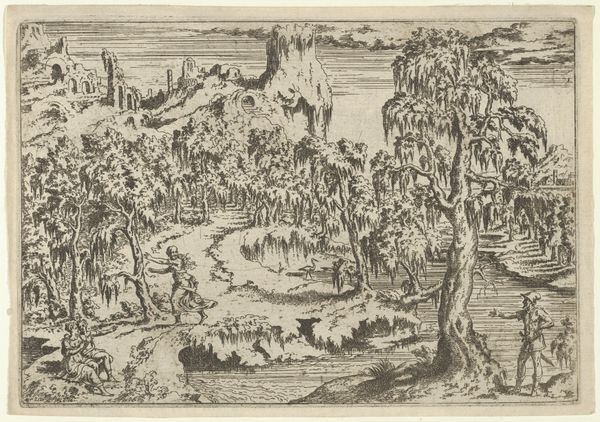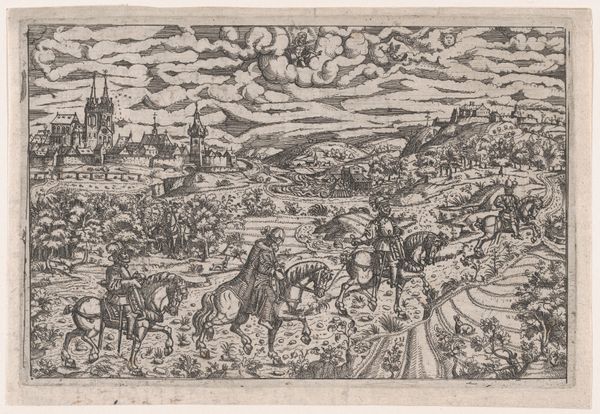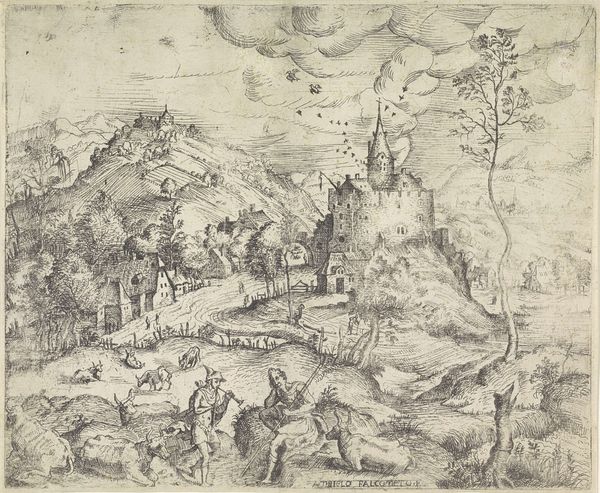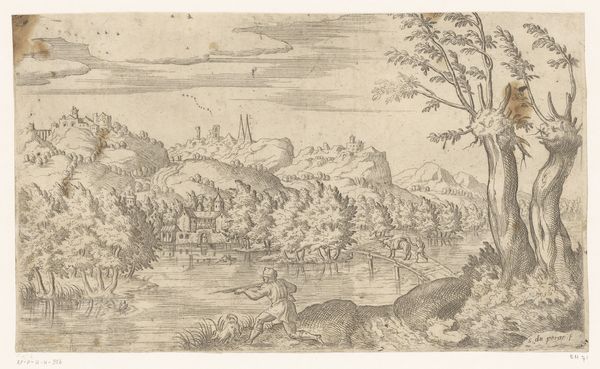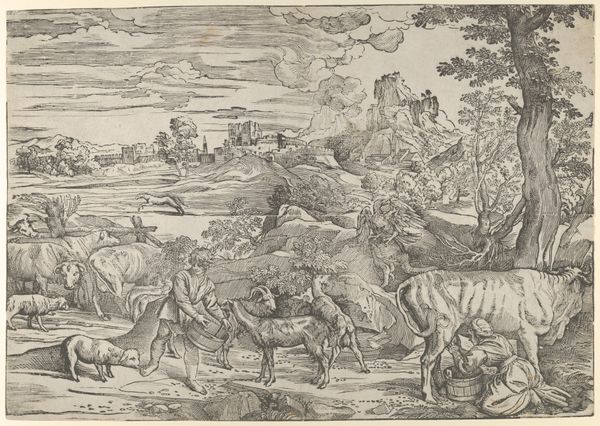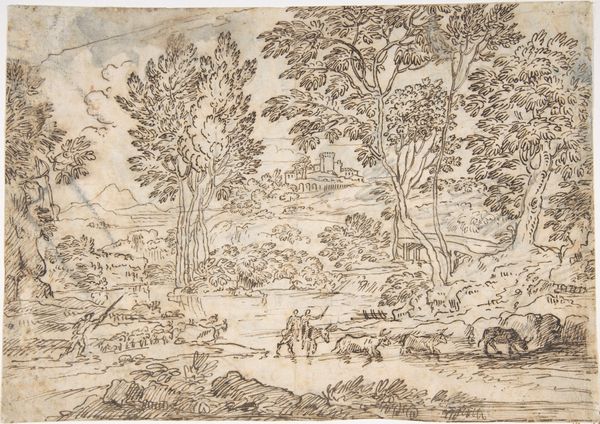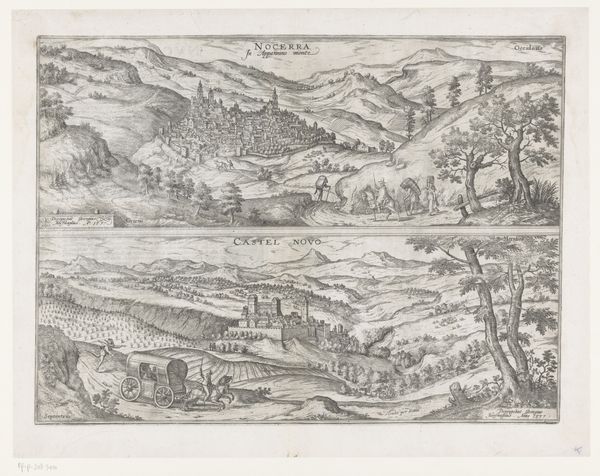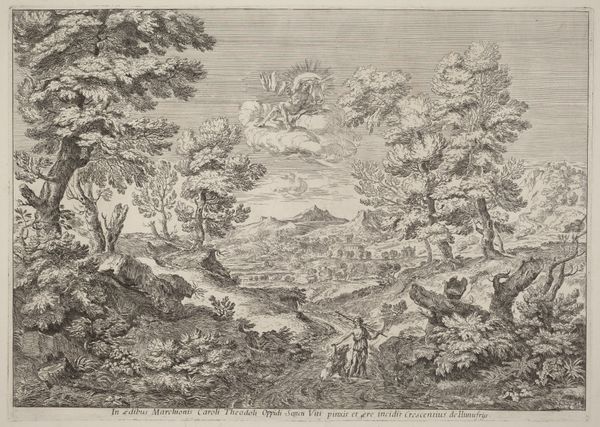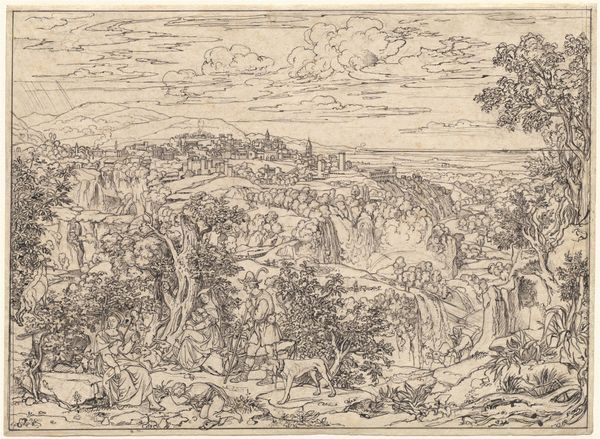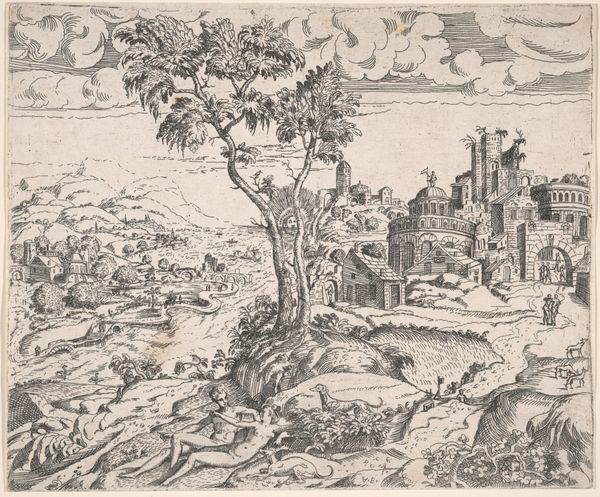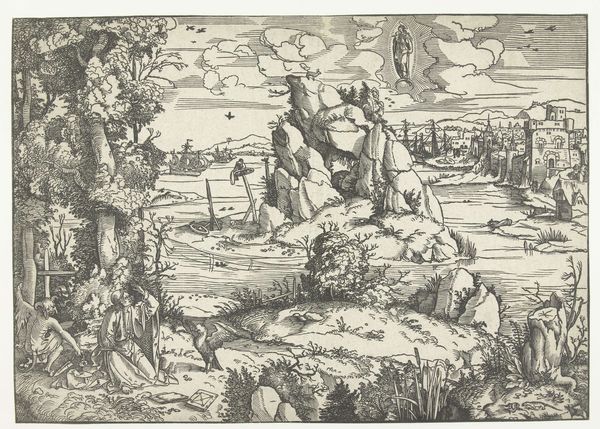
drawing, print, ink, woodcut
#
tree
#
drawing
#
ink drawing
#
narrative-art
#
pen drawing
# print
#
dog
#
landscape
#
figuration
#
form
#
ink
#
forest
#
soldier
#
woodcut
#
men
#
history-painting
#
northern-renaissance
Dimensions: Sheet: 5 9/16 × 7 13/16 in. (14.2 × 19.9 cm)
Copyright: Public Domain
Curator: Lucas Cranach the Elder's "The Stag-Hunt," dating back to 1506, is currently housed here at the Metropolitan Museum of Art. It's executed in ink, a masterfully detailed drawing that truly captures a specific historical moment. Editor: My initial impression is of an incredible flurry of action captured in painstaking detail; the lines feel both frenetic and controlled, a real visual paradox. It reminds me of chaotic pastoral symphonies, if that makes sense. Curator: It does. From a historical standpoint, this work provides fascinating insight into the aristocratic pastime of hunting. Notice how Cranach meticulously depicts the hunters' attire, the breeds of the dogs, even the architecture in the background - each detail serving as a document of the time. This relates to power structures, too, with hunting being a privilege of the elite, visually proclaiming their social standing. Editor: From a purely formal angle, I am fascinated by the way the composition utilizes line to create both depth and surface texture. The hatching and cross-hatching define the forms, create a sense of volume in the figures and foliage, while also flattening the overall image plane. See how the trees serve as visual barriers, partitioning spaces? And look at how the stag seems almost secondary to the choreography of humans and dogs. Curator: Indeed, one can even read the landscape itself as a signifier of the ruling class’s domain, tamed and controlled by the hunt, in keeping with the Renaissance obsession with order and control. Also, hunting as a ceremonial precursor to royal or noble dining carried its weight within court life and ceremony. Editor: So interesting to think about the societal implications behind it all. It does offer so much detail that one gets lost inside this imagined landscape. Its composition directs my eyes in myriad directions with the repeated clusters of hunting parties and game. I love the complexity of how each scene is arranged. Curator: It speaks volumes, not only about the hunt, but also about the social fabric of the era and also hunting practice. Cranach certainly delivers much within such complex layers. Editor: Absolutely, it truly invites sustained looking. Each individual grouping offering something more to observe about line, style, form and life from this period of time. Thank you.
Comments
No comments
Be the first to comment and join the conversation on the ultimate creative platform.
